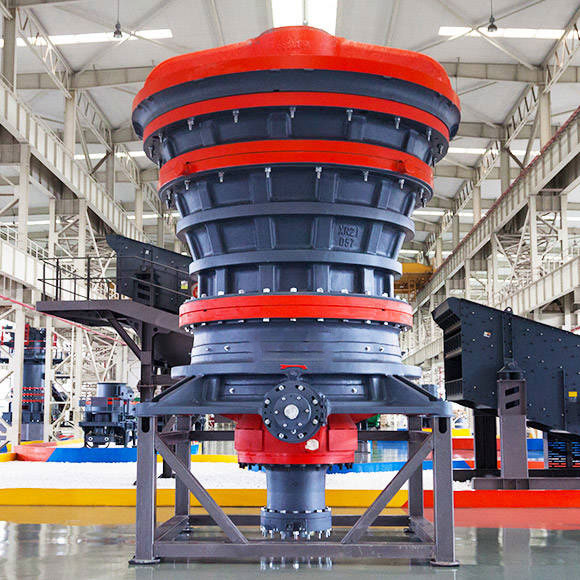The crushing efficiency of a minerals gyratory crusher refers to the ratio of the amount of crushed material to the amount of input energy consumed in the crushing process. It is a measure of how effectively the crusher converts the input energy into the desired output, which is the reduction in size of the minerals.
Gyratory crushers are commonly used in the mining and aggregate industries for crushing various types of minerals and rocks. They consist of a conical crushing head that gyrates inside a stationary concave, creating a squeezing action on the incoming feed material. This results in the reduction of the material size.

To understand the crushing efficiency of a gyratory crusher, several factors need to be considered:
Feed Size: The size of the feed material plays a significant role in the crushing efficiency. Smaller feed sizes generally result in finer product sizes, as the material has more contact with the crushing surfaces. Therefore, a well-controlled and consistent feed size is essential for optimizing crushing efficiency.
Crushing Chamber Design: The design of the crushing chamber affects the crushing efficiency. Different chamber designs may be used to achieve specific crushing goals, such as maximizing throughput or producing a specific product size. The shape, profile, and inclination of the crushing surfaces within the chamber influence the crushing action and efficiency.
Stroke and Speed: The stroke length and speed of the gyratory crusher also impact the crushing efficiency. The stroke length determines the material travel distance during each cycle of gyration, while the speed controls the rate at which the material is fed into the crushing chamber. Optimal combinations of stroke and speed can improve the crushing efficiency.
Closed-Side Setting (CSS): The CSS is the smallest gap between the crushing surfaces of the gyratory crusher. It determines the product size distribution and has a significant impact on crushing efficiency. A smaller CSS generally produces a finer product, but it also increases the crushing forces and energy consumption.
Power and Energy Consumption: The power and energy consumed by the gyratory crusher during the crushing process directly influence its efficiency. Higher power and energy consumption may result in reduced efficiency. Therefore, optimizing the power consumption while maintaining the desired crushing performance is crucial.
Wear Parts and Maintenance: The condition of wear parts, such as the concave liners and mantle, also affects the crushing efficiency. Worn-out or improperly maintained wear parts can lead to suboptimal crushing performance and increased energy consumption. Regular inspection, maintenance, and timely replacement of wear parts are necessary to ensure efficient operation.
